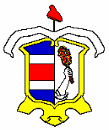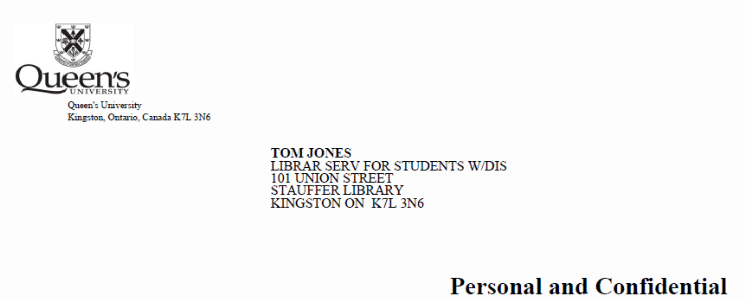NAME DATE PERIOD HOMEWORK AND TEST
COVERAGE PERIOD [SEE INSTRUCTIONS] S UMMARY OF0 21415 PERIODO OCHENTA Y SEIS DE
0 32737 PERIODO CIENTO CATORCE DE SESIONES
0 43752 PERIODO OCHENTA Y CINCO DE
0 43752 PERIODO OCHENTA Y CINCO DE
19 PERIODO CIENTO TRES DE SESIONES ORDINARIAS
Name _________________________________________ Date _________________________ Period ____
Name ______________________________________________ Date _____________________ Period ___
Homework and Test Grade Recovery
Chapter 4: Aqueous Reactions and Solution Stoichiometry
Exercises: Sections 4.2: Precipitation Reactions and Net Ionic Equations
1. Define the following in terms of chemical reactions
(c) solubility
(a) precipitate
(b) precipitation reaction
2. List the common soluble and insoluble ions in water
|
Soluble Compounds |
Soluble Exceptions |
Insoluble |
Insoluble Exceptions |
|
|
|
|
|
|
|
|
|
|
|
|
|
|
|
|
|
|
|
|
|
|
|
|
|
|
|
|
|
|
3. Predict whether each of the following compound is soluble (S) or insoluble (I) in water:
__________ a) K3PO4
__________ b) Pb(C2H3O2)2
__________ c) Ga(OH)2
__________ d) NaCN
__________ e) BaSO4
4. (a) What is a metathesis or exchange reaction?
(b) What is the general equation for a metathesis or exchange reaction?
(c) Write one example of a metathesis or exchange reaction. Use an example in which the metathesis
reaction is also a precipitation reaction.
5. Identify the precipitate (if any) that forms when the following solutions are mixed and write the balanced
equation for each reaction. If no precipitate forms, please write NONE.
a) Hg2(NO3)2 and KI _________________________
b) (NH4)2CO3 and CaCl2 _________________________
c) NaC2H3O2 and CuSO4 _________________________
6. Define the following:
(a) molecular equation
(b) complete ionic equation
(c) spectator ion
(d) net-ionic equation
7. Solutions of Pb(NO3)2(aq) and Na2SO4(aq) are mixed together.
(a) write the complete ionic equation
(b) identify the spectator ions: _______________________________
(c) write the net ionic equation
8. Solutions of CuBr2(aq) and NaOH(aq) are mixed together.
(a) write the complete ionic equation
(b) identify the spectator ions: _______________________________
(c) write the net ionic equation
8. Solutions of AgNO3(aq) and KI(aq) are mixed together.
(a) write the complete ionic equation
(b) identify the spectator ions: _______________________________
(c) write the net ionic equation
9. Separate samples of a solution of an unknown salt are treated with dilute solutions of HBr, H2SO4, and
NaOH. A precipitate forms only with H2SO4. Which of the following cations could the solution contain:
K+; Pb2+; Ba2+. Explain your answer.
10. Three solutions are mixed together to form a single solution. One contains 0.2 mol lead (II) acetate, the
second contains 0.1 mol sodium sulfide, and the third contains 0.1 mol of calcium chloride.
a) Write the net ionic equations for the precipitate reaction or reactions that occur.
2 PERIODO CIENTO TREINTA Y CUATRO DE
2 PERIODO NOVENTA Y CUATRO DE SESIONES
2 PERIODO NOVENTA Y TRES DE SESIONES
Tags: homework and, period, homework
- 11 JUDGES AND HUMAN RIGHTS ADDRESS BY JUSTICE CHRIS
- M MODALITÀ DI TRASMISSIONE RACCOMANDATA AR VIA GUAZZATORE 159
- ……………………………………………………… LİMİTED ŞİRKETİ GENEL KURUL KARARI KARAR NO
- 127 UPI ZAHTJEV POPUNITI ČITKO STRAIGHT CONNECTOR 2 CRNA
- NYMC IBC CONDITIONALLY APPROVED □ NOT APPROVED □ COMMITTEE
- 34 ОПШТА БОЛНИЦА ЧАЧАК ЧАЧАК КОНКУРСНА ДОКУМЕНТАЦИЈА ЗА ЈАВНУ
- DEPT POLICY & CONTRACTS INTERVIEWEE FLORENCE SERRA &
- ROMÂNIA PRIMAR COMUNA SÂNMARTIN LAZA CRISTIAN CONSILIUL LOCAL PROIECT
- DRAFT EXPERIMENTAL GRADUATE COURSE GIS7028 (6) INDIGENOUS AND HUMAN
- NAJCZĘSTSZE PYTANIA I WĄTPLIWOŚCI ZWIĄZANE Z INTERPRETACJĄ PRZEPISÓW REGULUJĄCYCH
- DCA CASE STUDY LIMA 1TITLE OF THE CASE STUDY
- FORM RENCANA PENGEMBANGAN DIRI JENIS KELAMIN LP SEMESTER
- EL PROFESOR ÍÑIGO DE LAS RIVAS DEL DEPARTAMENTO DE
- EFI 1M 2020 GUÍA 1 GUÍA DE APRENDIZAJE EDUCACIÓN
- APPRENTICESHIP SPECIFICATION APPRENTICESHIP SPECIFICATION NCFE CACHE ADVANCED APPRENTICESHIP FOR
- VLADA REPUBLIKE HRVATSKE ZAGREB 2 PROSINCA 2021 PREDLAGATELJ
- “JUZGADO SEXTO PENAL DEL CIRCUITO CON FUNCIONES DE CONOCIMIENTO
- (INSERT SCHOOL NAME) ANTIFRAUD BRIBERY AND CORRUPTION POLICY AND
- PUPIL PREMIUM STRATEGY SEPTEMBER 2019 NUMBER ON ROLL 55
- КЛИНИКА ЗА РЕХАБИЛИТАЦИЈУ „ДР МИРОЛСАВ ЗОТОВИЋ“ СОКОБАЊСКА 13 11000
- AFFILIATION YOUTH NEX CURRY SCHOOL OF EDUCATION UNIVERSITY
- TANTANGAN PENGEMBANGAN USAHA KECIL SEBAGAI STRATEGI PERLUASAN KESEMPATAN KERJA
- MANUAL DE INTERVENCION EN EDUCACIÓN PARA LA SALUD PARA
- LA PARTICIPACIÓN DEL MÉDICO VETERINARIO EN EL PROGRAMA NACIONAL
- FORMULARIO DE ESTUDIO DE CONVALIDACIÓN UNIVERSIDAD DIEGO
- OBJEKTI (KUĆE) NA PODRUČJU OPĆINE SABORSKO NAMIJENJENE ZA PRODAJU
- JOHNS MANVILLE OPEN CELL SPRAY FOAM INSULATION FEBRUARY 2014
- SOLICITUD DE REINTEGRO DE LA CUOTA COLEGIAL DEL COLEGIO
- CONTRAT D’ÉCHANGE D’ÉLÉMENTS D’ACTIF AVEC ROULEMENT CONTRAT D’ÉCHANGE D’ÉLÉMENTS
- GOVERNMENT OF WEST BENGAL DEPARTMENT OF HEALTH AND FW
WYMAGANIA EDUKACYJNE Z JĘZYKA ANGIELSKIEGO DLA KLASY VIII W
HANNAH VASANTHIE GUNASINGH 29 GREEN PARK LAYOUT II CROSS
ADMINISTRATION OF CLIENT FUNDS AND CLIENTS’ VALUABLE DOCUMENTS AND
CHARGE 811C ― PAGE 10 OF 10 811 DAMAGES
READINGS (FOR PART I AND PART II OF HEALTH
 LİSANSÜSTÜ PROGRAMLARA BAŞVURU FORMU DOKÜMAN KODU ÜNVENSFRM001 YAYIN TARIHI
LİSANSÜSTÜ PROGRAMLARA BAŞVURU FORMU DOKÜMAN KODU ÜNVENSFRM001 YAYIN TARIHI 18 US DEPARTMENT OF HOUSING AND URBAN DEVELOPMENT
18 US DEPARTMENT OF HOUSING AND URBAN DEVELOPMENT PRIMARIA MAGHERANI TRANSPARENTA VENITURI SALARIALE IN CONFORMITATE CU PREVEDERILE
 THS327 CARDAN ADAPTER KNUCKLE JOINT ONLY FOR TENSION THS327158159M
THS327 CARDAN ADAPTER KNUCKLE JOINT ONLY FOR TENSION THS327158159MKLAUZULA INFORMACYJNA ZGODNIE Z ART 13 ROZPORZĄDZENIA PARLAMENTU EUROPEJSKIEGO
DOBA MEDIJA JAVNI INTERVJU MEDIJI I KULTURA ČETVRTAK 8
 “ANÁLISIS DE EXPERIENCIAS SOBRE PRÁCTICAS DE ENSEÑANZA EN EDUCACIÓN
“ANÁLISIS DE EXPERIENCIAS SOBRE PRÁCTICAS DE ENSEÑANZA EN EDUCACIÓNPATVIRTINTA ANYKŠČIŲ RAJONO SAVIVALDYBĖS ADMINISTRACIJOS DIREKTORIAUS 2017 M VASARIO
 ACTIVETENDRING PARTNERSHIP SPORTS PERSONALITY AWARDS 2016 PRESENTATION TO BE
ACTIVETENDRING PARTNERSHIP SPORTS PERSONALITY AWARDS 2016 PRESENTATION TO BE MUNICIPALIDAD DE ALAJUELA GESTION VIAL TELFAX 4362395 APDO 4074050
MUNICIPALIDAD DE ALAJUELA GESTION VIAL TELFAX 4362395 APDO 4074050 WHAT WILL MY NEW PAY STUB LOOK LIKE?
WHAT WILL MY NEW PAY STUB LOOK LIKE? FILING – 11302017 BASIS AND PURPOSE CHAPTER W3
KARDINAL JOSIP BOZANIĆ NADBISKUP ZAGREBAČKI HOMILIJA PRIGODOM SUSRETA VJEROUČITELJA
 FORM 1A ABBREVIATED PROPOSAL FOR NEW PROGRAMMAJOR MINOR COGNATE
FORM 1A ABBREVIATED PROPOSAL FOR NEW PROGRAMMAJOR MINOR COGNATE WARRIOR WRESTLING CLUB SIGNUP SHEET WRESTLER’S NAME AGE APPROX
WARRIOR WRESTLING CLUB SIGNUP SHEET WRESTLER’S NAME AGE APPROX